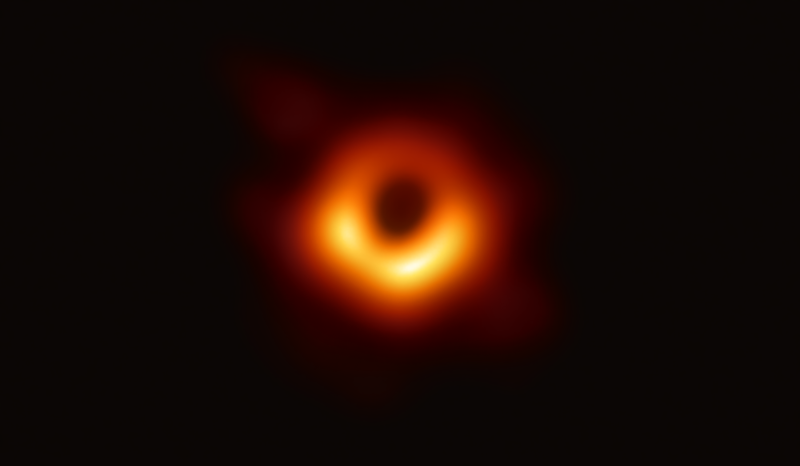Topic Espace/Astronomie
Modérateurs: Garion, Silverwitch
Re: Topic Espace/Astronomie
Je l’observe en ce moment de mon lieu de vacances.
Je l’ai mitraillée au 85 mm et 300 mm, plus quelques autres essais sur ciel profond.
Je posterais bien une image mais je n’ai pas d’hébergeur pour le moment et on ne peut pas télécharger directement d’un pc ou tablette (Hugues si tu m’entends...).
Elle s’éloigne à mesure qu’elle s’élève vers la grande ourse. Mais ça reste un spectacle rare.
Sur les photos au 300 mm on distingue bien les deux queues de la comète, celle de poussières (courbée) et celle de gaz, bleutée et orientée vers le soleil.
Je l’ai mitraillée au 85 mm et 300 mm, plus quelques autres essais sur ciel profond.
Je posterais bien une image mais je n’ai pas d’hébergeur pour le moment et on ne peut pas télécharger directement d’un pc ou tablette (Hugues si tu m’entends...).
Elle s’éloigne à mesure qu’elle s’élève vers la grande ourse. Mais ça reste un spectacle rare.
Sur les photos au 300 mm on distingue bien les deux queues de la comète, celle de poussières (courbée) et celle de gaz, bleutée et orientée vers le soleil.
scc
THE ITALIAN GUY...
"...elles donnent beaucoup de lait vos chèvres mon brave? Les blanches donnent beaucoup de lait...et les noirrres aussi..."
THE ITALIAN GUY...
"...elles donnent beaucoup de lait vos chèvres mon brave? Les blanches donnent beaucoup de lait...et les noirrres aussi..."
-

sccc - Messages: 20255
- Inscription: 22 Fév 2003, 19:32
- Localisation: Belgique
Re: Topic Espace/Astronomie
sccc a écrit:Je posterais bien une image mais je n’ai pas d’hébergeur pour le moment et on ne peut pas télécharger directement d’un pc ou tablette (Hugues si tu m’entends...).
Personnellement, je suis passé sur postimg.cc depuis que photobucket est devenu payant, pour l'instant c'est gratuit sans limite de taille, de durée ou de nombre d'images.
Si j'avais souvent répété que je désirais mourir dans mon lit, ce que je voulais vraiment dire par là, c'est que je voulais me faire marcher dessus par un éléphant pendant que je ferais l'amour. Les Fusils d'Avalon, Roger Zelazny.
-

sheon - Léon Raoul
- Messages: 23761
- Inscription: 03 Juin 2010, 16:55
Re: Topic Espace/Astronomie
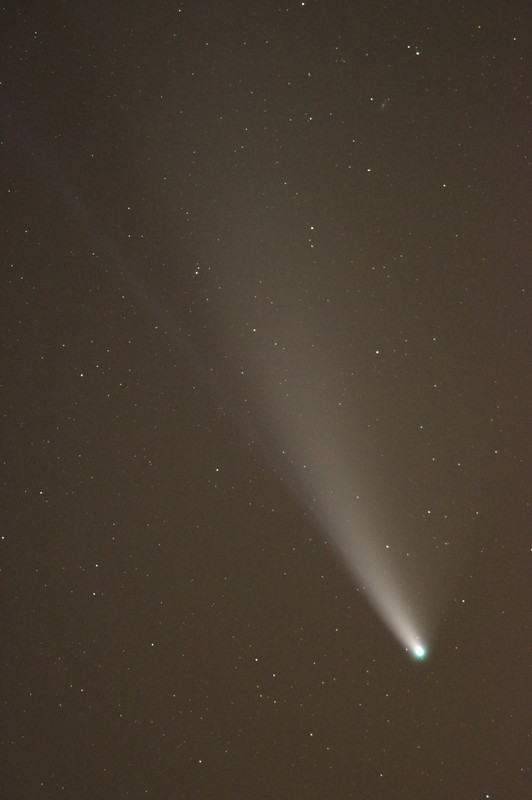
Merci Sheon.
Voilà une des images, prise avec un Pentax KP et un objectif Pentax 300 mm f/2.8, à pleine ouverture, 20 s de pose à 3200 ISO, appareil sur monture équatoriale.
Dernière édition par sccc le 21 Juil 2020, 15:18, édité 1 fois.
scc
THE ITALIAN GUY...
"...elles donnent beaucoup de lait vos chèvres mon brave? Les blanches donnent beaucoup de lait...et les noirrres aussi..."
THE ITALIAN GUY...
"...elles donnent beaucoup de lait vos chèvres mon brave? Les blanches donnent beaucoup de lait...et les noirrres aussi..."
-

sccc - Messages: 20255
- Inscription: 22 Fév 2003, 19:32
- Localisation: Belgique
Re: Topic Espace/Astronomie
Superbe, sccc 

la démocratie et la souveraineté nationale sont comme l’avers et le revers d’une même médaille.
-

Rainier - Messages: 16919
- Inscription: 26 Mar 2003, 22:46
- Localisation: Guyancourt for ever
Re: Topic Espace/Astronomie

Si j'avais souvent répété que je désirais mourir dans mon lit, ce que je voulais vraiment dire par là, c'est que je voulais me faire marcher dessus par un éléphant pendant que je ferais l'amour. Les Fusils d'Avalon, Roger Zelazny.
-

sheon - Léon Raoul
- Messages: 23761
- Inscription: 03 Juin 2010, 16:55
Re: Topic Espace/Astronomie
Bien joué !
« Par exemple, le football, on y joue dans des endroits spéciaux. Il devrait y avoir des terrains de guerre pour ceux qui aiment mourir en plein air. Ailleurs on danserait et on rirait » (Roger Nimier)
- DCP
- 28 juin 2021 !
- Messages: 25717
- Inscription: 26 Fév 2003, 11:18
Re: Topic Espace/Astronomie
Je vais jeter un oeil ce soir.
-

Maverick - Bête de sexe
- Messages: 41548
- Inscription: 22 Fév 2003, 00:02
- Localisation: Dans ton cul !!
Re: Topic Espace/Astronomie
Elle reste désespérément invisible chaque soirée, cachée par ce voile de lumière de ville évanescent. Monde de merde.
- Dervi
- Messages: 1786
- Inscription: 21 Déc 2009, 13:04
Re: Topic Espace/Astronomie
Quand la nuit tombe elle doit être basse sur l'horizon?
Hier j'ai rien vu malgré des conditions assez clair, mais l'horizon est caché par les arbres.
Hier j'ai rien vu malgré des conditions assez clair, mais l'horizon est caché par les arbres.

"I married the 12 cylinder engine and I never divorced it" Enzo Ferrari.
-

Alfa - imperator
- Messages: 12947
- Inscription: 26 Jan 2004, 11:38
- Localisation: De Gaulle
Re: Topic Espace/Astronomie
Elle est visible vers 22h30, elle monte chaque jour un peu plus mais perd de la luminosité.
scc
THE ITALIAN GUY...
"...elles donnent beaucoup de lait vos chèvres mon brave? Les blanches donnent beaucoup de lait...et les noirrres aussi..."
THE ITALIAN GUY...
"...elles donnent beaucoup de lait vos chèvres mon brave? Les blanches donnent beaucoup de lait...et les noirrres aussi..."
-

sccc - Messages: 20255
- Inscription: 22 Fév 2003, 19:32
- Localisation: Belgique
Re: Topic Espace/Astronomie
Stellarium est votre ami...
À télécharger ici (mais aussi présent par défaut et même déjà installé dans toute distribution Linux digne de ce nom):
https://stellarium.org/fr/
En revanche, la comète n'y est pas par défaut (il connait le nom, mais pas les données), il faut ajouter les sources MPC (à chaque rédmarrage de Stellarium, mais ça prend 5 secondes) pour qu'il connaisse les données.
Une vidéo parmi de nombreuses (choisie au hasard!) qui explique comment faire:
(Bon là il dit dans cette vidéo, différente d'une autre où était dit le contraire, que la comete est pas listée, c'est faux, elle y est en tout cas dans certaines versions de Stellarium.. juste les données sont manquantes)
Hugues
À télécharger ici (mais aussi présent par défaut et même déjà installé dans toute distribution Linux digne de ce nom):
https://stellarium.org/fr/
En revanche, la comète n'y est pas par défaut (il connait le nom, mais pas les données), il faut ajouter les sources MPC (à chaque rédmarrage de Stellarium, mais ça prend 5 secondes) pour qu'il connaisse les données.
Une vidéo parmi de nombreuses (choisie au hasard!) qui explique comment faire:
(Bon là il dit dans cette vidéo, différente d'une autre où était dit le contraire, que la comete est pas listée, c'est faux, elle y est en tout cas dans certaines versions de Stellarium.. juste les données sont manquantes)
Hugues

-

Hugues - Michel Desjoyeaux virtuel
- Messages: 12492
- Inscription: 26 Fév 2003, 06:14
Re: Topic Espace/Astronomie
A partir de 23h25, il y a l'ISS qui passe vraiment à proximité apparente (et sera beaucoup plus brillante que la comète).. sccc c'est le moment de nous faire une belle photo..
Bon la proximité dépend de votre lieu.. il doit même y avoir des lieux en Europe où les deux objets vont se superposer (j'avoue que j'ai pas cherché où encore)
Hugues
Bon la proximité dépend de votre lieu.. il doit même y avoir des lieux en Europe où les deux objets vont se superposer (j'avoue que j'ai pas cherché où encore)
Hugues

-

Hugues - Michel Desjoyeaux virtuel
- Messages: 12492
- Inscription: 26 Fév 2003, 06:14
Re: Topic Espace/Astronomie
punaise, faut pas que je me relève pour aller voir ça.
-

Nicklaus - Je vous emmerde et je rentre à ma maison
- Messages: 65847
- Inscription: 21 Fév 2003, 09:19
- Localisation: Trump Tower, Moscou, Fédération de Russie
Re: Topic Espace/Astronomie
Hier j'y étais pas. 
Par contre avant-hier, j'ai fait qques essais autres que la comète:

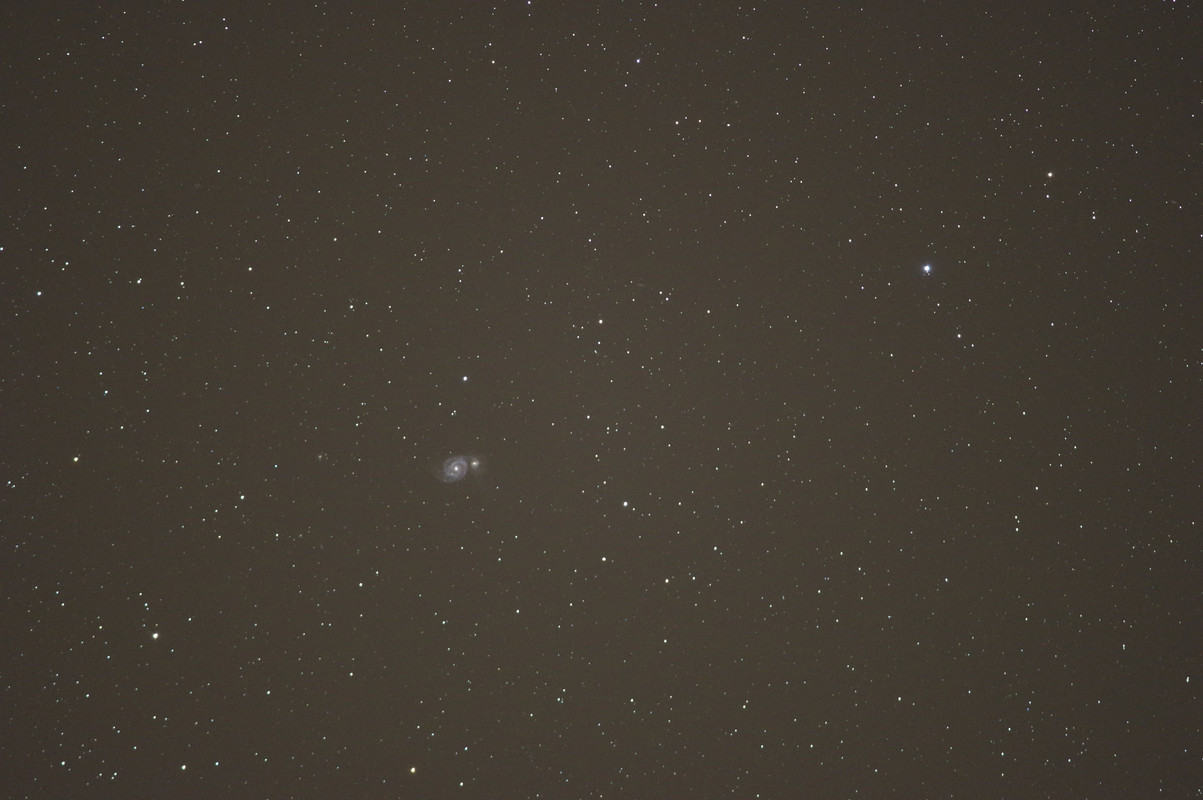
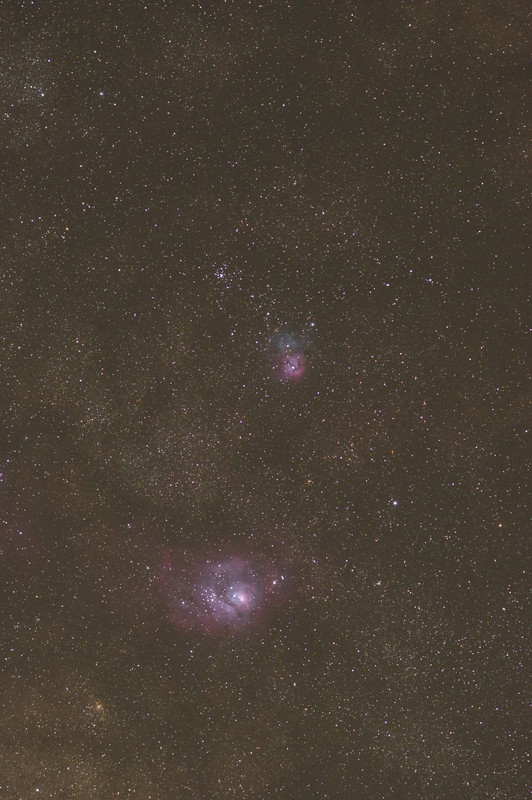
Et une nouvelle de la comète
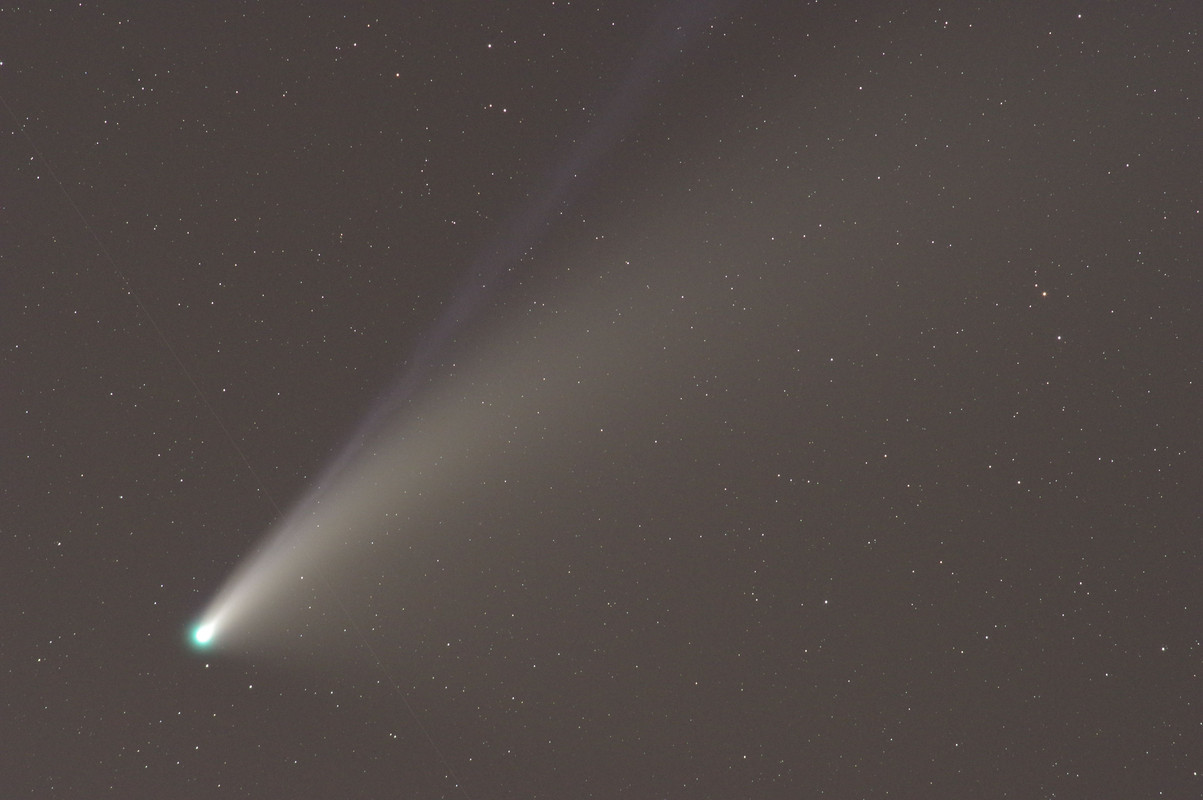
Toutes les photos sont des poses uniques, sans traitement à part la conversion en JPG
Par contre avant-hier, j'ai fait qques essais autres que la comète:



Et une nouvelle de la comète

Toutes les photos sont des poses uniques, sans traitement à part la conversion en JPG
scc
THE ITALIAN GUY...
"...elles donnent beaucoup de lait vos chèvres mon brave? Les blanches donnent beaucoup de lait...et les noirrres aussi..."
THE ITALIAN GUY...
"...elles donnent beaucoup de lait vos chèvres mon brave? Les blanches donnent beaucoup de lait...et les noirrres aussi..."
-

sccc - Messages: 20255
- Inscription: 22 Fév 2003, 19:32
- Localisation: Belgique
Re: Topic Espace/Astronomie

Si j'avais souvent répété que je désirais mourir dans mon lit, ce que je voulais vraiment dire par là, c'est que je voulais me faire marcher dessus par un éléphant pendant que je ferais l'amour. Les Fusils d'Avalon, Roger Zelazny.
-

sheon - Léon Raoul
- Messages: 23761
- Inscription: 03 Juin 2010, 16:55
Re: Topic Espace/Astronomie
En fait c'est la première fois que je fais de l'astrophoto en numérique. Par le passé j'en ai fait en argentique mais je dois avouer que c'était beaucoup plus pénible.
Je suis passé au numérique en 2009 en achetant un Pentax K7, malheureusement son capteur était beaucoup trop bruité et peu performant dans les conditions de prise de vue requises pour de l'astrophoto. En septembre 2019, j'ai acheté un Pentax KP, doté d'un capteur beaucoup plus sensible est beaucoup moins bruité. J'avoue être moi-même surpris du résultat avec une seule pose (pas de superposition de plusieurs poses) de 30s à 3 minutes. Bon être honnête, cela vient également de l'optique de course, qui m'a coûté un bras même d'occasion.
Je vais peut-être commencer à creuser du côté traitement... , même si c'est pas ma tasse de thé.
, même si c'est pas ma tasse de thé.
Je suis passé au numérique en 2009 en achetant un Pentax K7, malheureusement son capteur était beaucoup trop bruité et peu performant dans les conditions de prise de vue requises pour de l'astrophoto. En septembre 2019, j'ai acheté un Pentax KP, doté d'un capteur beaucoup plus sensible est beaucoup moins bruité. J'avoue être moi-même surpris du résultat avec une seule pose (pas de superposition de plusieurs poses) de 30s à 3 minutes. Bon être honnête, cela vient également de l'optique de course, qui m'a coûté un bras même d'occasion.
Je vais peut-être commencer à creuser du côté traitement...
scc
THE ITALIAN GUY...
"...elles donnent beaucoup de lait vos chèvres mon brave? Les blanches donnent beaucoup de lait...et les noirrres aussi..."
THE ITALIAN GUY...
"...elles donnent beaucoup de lait vos chèvres mon brave? Les blanches donnent beaucoup de lait...et les noirrres aussi..."
-

sccc - Messages: 20255
- Inscription: 22 Fév 2003, 19:32
- Localisation: Belgique
Re: Topic Espace/Astronomie
Rien vu, trop de nuages hier soir. 
-

Maverick - Bête de sexe
- Messages: 41548
- Inscription: 22 Fév 2003, 00:02
- Localisation: Dans ton cul !!
Re: Topic Espace/Astronomie
C'est vraiment joli, merci Sccc !
- Ouais_supère
- Messages: 25815
- Inscription: 20 Juil 2005, 11:54
Re: Topic Espace/Astronomie
Jolie en effet, on voit mème une galaxie ! M51, du tourbillon.
A savoir que les galaxies (les plus proches) sont assez grande dans la voute céleste, le problème c'est qu'elles manque de luminosité donc on les voit mal. Andromède prend beaucoup plus de place que la lune par exemple mais il n'y a guerre que son noyau qui est visible a l’œil nue, et par de bonne conditions.
A savoir que les galaxies (les plus proches) sont assez grande dans la voute céleste, le problème c'est qu'elles manque de luminosité donc on les voit mal. Andromède prend beaucoup plus de place que la lune par exemple mais il n'y a guerre que son noyau qui est visible a l’œil nue, et par de bonne conditions.

"I married the 12 cylinder engine and I never divorced it" Enzo Ferrari.
-

Alfa - imperator
- Messages: 12947
- Inscription: 26 Jan 2004, 11:38
- Localisation: De Gaulle
Re: Topic Espace/Astronomie
C’est bien M51, c’est elle que je visais. Avec 300 mm de focale c’est bien sûr pas très grand sur l’image.
Dans l’ordre, du haut en bas:
M11 dans l’Ecu, amas globulaire.
M51 dans la Grande Ourse, galaxie spirale (en phase de fusion avec une galaxie proche).
M8 (Lagune) et M20 (Trifide), dans le Sagittaire, nébuleuses à émission
Dans l’ordre, du haut en bas:
M11 dans l’Ecu, amas globulaire.
M51 dans la Grande Ourse, galaxie spirale (en phase de fusion avec une galaxie proche).
M8 (Lagune) et M20 (Trifide), dans le Sagittaire, nébuleuses à émission
scc
THE ITALIAN GUY...
"...elles donnent beaucoup de lait vos chèvres mon brave? Les blanches donnent beaucoup de lait...et les noirrres aussi..."
THE ITALIAN GUY...
"...elles donnent beaucoup de lait vos chèvres mon brave? Les blanches donnent beaucoup de lait...et les noirrres aussi..."
-

sccc - Messages: 20255
- Inscription: 22 Fév 2003, 19:32
- Localisation: Belgique
Re: Topic Espace/Astronomie
Tu prends tes photos en étant loin des villes ?
-

Nicklaus - Je vous emmerde et je rentre à ma maison
- Messages: 65847
- Inscription: 21 Fév 2003, 09:19
- Localisation: Trump Tower, Moscou, Fédération de Russie
Re: Topic Espace/Astronomie
Nicklaus a écrit:Tu prends tes photos en étant loin des villes ?
C'est plutôt conseillé sous peine de voiler d'orange le fond du ciel.
Là je suis dans ma maison e Toscane, pas de loupiotes visibles sur 360° de l'endroit où j'observe. Et un ciel bien noir et transparent. Pas le meilleur mais très satisfaisant.
-

sccc - Messages: 20255
- Inscription: 22 Fév 2003, 19:32
- Localisation: Belgique
Re: Topic Espace/Astronomie

Super photo !
(je me rappelle de la comète visible dans les années 90, je crois, très visible, très impressionnante)
"c'est quoi le blues". Toujours les mêmes histoires, celles qui font vaciller les mondes et les empires.
John Lee Hooker
John Lee Hooker
- Shoemaker
- Messages: 22441
- Inscription: 24 Nov 2003, 12:11
- Localisation: Out of Africa
Re: Topic Espace/Astronomie
Shoemaker a écrit::good
Super photo !
(je me rappelle de la comète visible dans les années 90, je crois, très visible, très impressionnante)
Hale Bopp. Prochain passage dans 2392 ans.
Pour Neowise, prochain passage dans 6800 ans.
scc
THE ITALIAN GUY...
"...elles donnent beaucoup de lait vos chèvres mon brave? Les blanches donnent beaucoup de lait...et les noirrres aussi..."
THE ITALIAN GUY...
"...elles donnent beaucoup de lait vos chèvres mon brave? Les blanches donnent beaucoup de lait...et les noirrres aussi..."
-

sccc - Messages: 20255
- Inscription: 22 Fév 2003, 19:32
- Localisation: Belgique
Re: Topic Espace/Astronomie
sccc a écrit:Shoemaker a écrit::good
Super photo !
(je me rappelle de la comète visible dans les années 90, je crois, très visible, très impressionnante)
Hale Bopp. Prochain passage dans 2392 ans.
Pour Neowise, prochain passage dans 6800 ans.
2392 ans ! Incroyable ! Quant à 6800, j'imagine même pas !
On est peu de chose
"c'est quoi le blues". Toujours les mêmes histoires, celles qui font vaciller les mondes et les empires.
John Lee Hooker
John Lee Hooker
- Shoemaker
- Messages: 22441
- Inscription: 24 Nov 2003, 12:11
- Localisation: Out of Africa
Re: Topic Espace/Astronomie
Même sur Dunkerque on la voyait malgré les 3 kilomètres de pollution dans le ciel 
-

Nicklaus - Je vous emmerde et je rentre à ma maison
- Messages: 65847
- Inscription: 21 Fév 2003, 09:19
- Localisation: Trump Tower, Moscou, Fédération de Russie
Re: Topic Espace/Astronomie
sccc a écrit:Nicklaus a écrit:Tu prends tes photos en étant loin des villes ?
C'est plutôt conseillé sous peine de voiler d'orange le fond du ciel.
Là je suis dans ma maison e Toscane, pas de loupiotes visibles sur 360° de l'endroit où j'observe. Et un ciel bien noir et transparent. Pas le meilleur mais très satisfaisant.
La toscane ? Situ me dis que t'es pas loin du mugello, je te maudis sur 50 générations.
-

Nicklaus - Je vous emmerde et je rentre à ma maison
- Messages: 65847
- Inscription: 21 Fév 2003, 09:19
- Localisation: Trump Tower, Moscou, Fédération de Russie
Re: Topic Espace/Astronomie
Je suis beaucoup plus au Sud, du côté du monte Amiata.
Mais tu peux maudire quand même si ça te fait plaisir. y
y
Mais tu peux maudire quand même si ça te fait plaisir.
scc
THE ITALIAN GUY...
"...elles donnent beaucoup de lait vos chèvres mon brave? Les blanches donnent beaucoup de lait...et les noirrres aussi..."
THE ITALIAN GUY...
"...elles donnent beaucoup de lait vos chèvres mon brave? Les blanches donnent beaucoup de lait...et les noirrres aussi..."
-

sccc - Messages: 20255
- Inscription: 22 Fév 2003, 19:32
- Localisation: Belgique
Re: Topic Espace/Astronomie
Patience, tu es sur la liste d'attente.
-

Nicklaus - Je vous emmerde et je rentre à ma maison
- Messages: 65847
- Inscription: 21 Fév 2003, 09:19
- Localisation: Trump Tower, Moscou, Fédération de Russie
Re: Topic français : "avoir été" ou "être allé" ?
Secret de polichinelle (de toute façon c'était soit SpaceX soit Boeing... et Boeing paraissait incertain):
Hugues
Hugues

-

Hugues - Michel Desjoyeaux virtuel
- Messages: 12492
- Inscription: 26 Fév 2003, 06:14
Re: Topic français : "avoir été" ou "être allé" ?
Es-tu sûr d'avoir posté dans le bon sujet ?
« Par exemple, le football, on y joue dans des endroits spéciaux. Il devrait y avoir des terrains de guerre pour ceux qui aiment mourir en plein air. Ailleurs on danserait et on rirait » (Roger Nimier)
- DCP
- 28 juin 2021 !
- Messages: 25717
- Inscription: 26 Fév 2003, 11:18
Re: Topic Espace/Astronomie
Ce ne sont que des extraits d'un très long fil que vous pouvez consulter sur le compte idoine.
Hugues

-

Hugues - Michel Desjoyeaux virtuel
- Messages: 12492
- Inscription: 26 Fév 2003, 06:14
Re: Topic Espace/Astronomie
Contrairement, à ce qui a été dit dans tes Tweets, 3 possibilités :
- Phénomène de formation de la phosphine inconnu
- Bactéries
- Mais ne l'oublions pas : erreur de mesure et taux de phosphine réel inférieur à celui mesuré.
Il faut vérifier les 3 possibilités, et pas uniquement les deux premières.
- Phénomène de formation de la phosphine inconnu
- Bactéries
- Mais ne l'oublions pas : erreur de mesure et taux de phosphine réel inférieur à celui mesuré.
Il faut vérifier les 3 possibilités, et pas uniquement les deux premières.

-
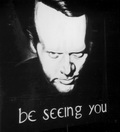
Garion - Prisonnier
- Messages: 18759
- Inscription: 19 Fév 2003, 10:15
- Localisation: Le village
Re: Topic Espace/Astronomie
Hugo Lisoir en parle dans les DNDE du jour. 
- Nono
- Messages: 2557
- Inscription: 18 Juin 2016, 14:12
Re: Topic Espace/Astronomie
Garion a écrit:Contrairement, à ce qui a été dit dans tes Tweets, 3 possibilités :
- Phénomène de formation de la phosphine inconnu
- Bactéries
- Mais ne l'oublions pas : erreur de mesure et taux de phosphine réel inférieur à celui mesuré.
Il faut vérifier les 3 possibilités, et pas uniquement les deux premières.
Dans le fil c'est assez clair qu'il y a ces trois hypothèses.
Et même dans ce que j'ai reproduit, c'est dit implicitement: puisqu'ils incitent la communauté scientifique à mesurer elle même les taux et à refaire les calculs à partir de leur données.
"We would like to see our findings repeated with observations at different wavelengths"
Hugues

-

Hugues - Michel Desjoyeaux virtuel
- Messages: 12492
- Inscription: 26 Fév 2003, 06:14
Re: Topic Espace/Astronomie
Hugues a écrit:Le premier trou noir "photographié":
Cliquer pour l'image en haute qualité
Event Horizon Telescope Collaboration[/url]"]Scientists have obtained the first image of a black hole, using Event Horizon Telescope observations of the center of the galaxy M87. The image shows a bright ring formed as light bends in the intense gravity around a black hole that is 6.5 billion times more massive than the Sun. This long-sought image provides the strongest evidence to date for the existence of supermassive black holes and opens a new window onto the study of black holes, their event horizons, and gravity. Credit: Event Horizon Telescope Collaboration Texte caché : cliquez sur le cadre pour l'afficher
Hugues

-

Hugues - Michel Desjoyeaux virtuel
- Messages: 12492
- Inscription: 26 Fév 2003, 06:14
Re: Topic Espace/Astronomie
Pour ceux qui ne parlent pas parfaitement l'anglais, ça signifie que le premier trou noir à être photographié semble osciller.
Si j'avais souvent répété que je désirais mourir dans mon lit, ce que je voulais vraiment dire par là, c'est que je voulais me faire marcher dessus par un éléphant pendant que je ferais l'amour. Les Fusils d'Avalon, Roger Zelazny.
-

sheon - Léon Raoul
- Messages: 23761
- Inscription: 03 Juin 2010, 16:55
-

Nicklaus - Je vous emmerde et je rentre à ma maison
- Messages: 65847
- Inscription: 21 Fév 2003, 09:19
- Localisation: Trump Tower, Moscou, Fédération de Russie
Re: Topic Espace/Astronomie

Si j'avais souvent répété que je désirais mourir dans mon lit, ce que je voulais vraiment dire par là, c'est que je voulais me faire marcher dessus par un éléphant pendant que je ferais l'amour. Les Fusils d'Avalon, Roger Zelazny.
-

sheon - Léon Raoul
- Messages: 23761
- Inscription: 03 Juin 2010, 16:55
Qui est en ligne
Utilisateurs parcourant ce forum: Ahrefs [Bot] et 12 invités

